This article first appeared in our sister publication, Dairy Farmer.
This article was one of the most popular articles on farmersweekly.co.nz in 2023.
The 2023 National Dairy Industry Awards Manager of the Year winner had an eye on the future when he decided to give the awards a crack with the goal of building his profile and network.
At 25, Jack Symes is just starting out in dairy farming. He has only been in the industry two years but made his mark when was named as the winner.
Symes is the farm manager on his family’s 160ha farm at Southbridge, Canterbury, milking 630 cows for his parents, Brian and Judy Symes.
“Obviously I’ve only had two years of dairy farming and there’s a lot of competition out there but if you have this behind you as well, it’s a good way to get your name out there,” Symes says.
Once he made the decision to enter, he got his staff, Fijian Izaz Ifraz Ali and Brazilian Claudio Bezerra, involved in the process.
“I said to the staff, ‘I’m doing this awards process’, and I set out what we’re going to have to do, and they sort of bought into that and made sure presentation of the farm was high, they kept an eye out to make sure if something was out of place, they did it and did not have to have me on to them about it.
“I went into it to challenge myself and see where my strengths and weaknesses were and I sort of broke it down,” the first-time entrant says.
“I wanted to get in the top five in the regionals and as soon as I won regionals I was like, ‘Wow, I’ve come this far, I’m going to really give it my all’.”
He also won the DeLaval Livestock Management Award, the Fonterra Dairy Management Award, the Ravensdown Sustainable Pasture Award and the NZDIA Personal Planning and Financial Management Award – and more than $24,000 in prizes.
The judges observed that farming comes naturally to him, and he is very credible and genuine.
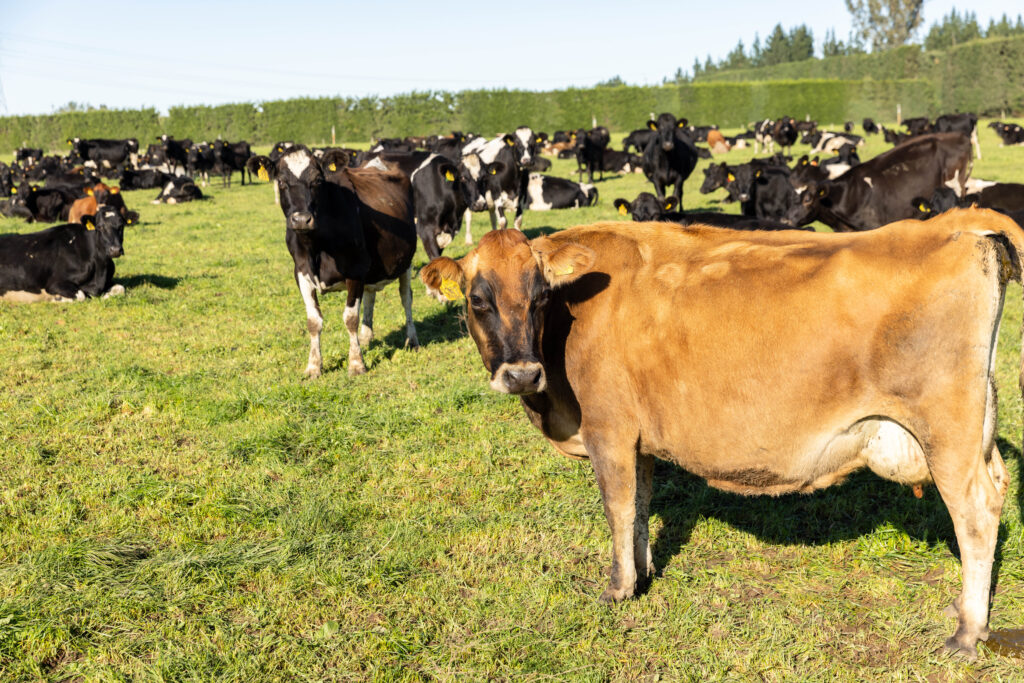
“Jack is a very intelligent, quiet achiever who presented a pristine property,” judge Jack Meehan from ANZ said.
“He runs a tight ship, and his financial planning reflects a commitment to future goals.”
The judges noted Symes was strong across the board and demonstrated best practice in all areas of the farming operation with strengths in pasture, animals and financial management.
The judges noted that he has proactive management skills, especially with regards to milk quality, and they were impressed with his good planning.
“The property demonstrated clean pastures and Jack was flexible on his system depending on the conditions.
“He takes pride and care in the farm.”
Symes grew up on dairy farms and knew from a young age he wanted to work with animals outdoors. He says choosing farming gave him the opportunity to pursue his passion.
“I always knew I wanted to go farming, I just had these boxes I wanted to tick before I went straight into it,” he says.
The first step was Lincoln University, where he graduated with a Bachelor of Commerce (Agriculture).
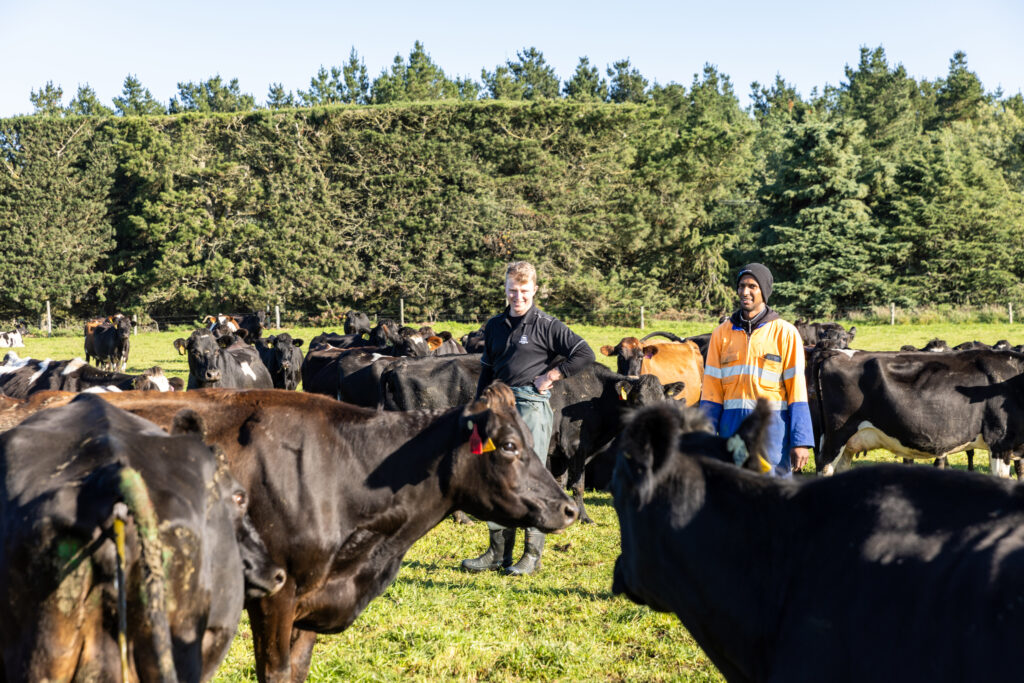
In his summer holidays he worked long hours for a silage contractor and that income, along with what he earned working on the home farm in other holidays, was enough to put him through university without needing a loan.
“Lincoln opened me up to quite a few different ideas and also showcased how each individual sector operates in terms of the economic farm surplus and doing budgets, so I soon got a good idea of what would best suit me going forward.”
He learnt about deer farming, cropping, sheep and beef, dairy and horticulture, but one sector stood out to him.
“What attracted me to the dairy industry was the equity growth potential – you’ve got managing, contract milking, sharemilking opportunities, whereas for sheep and beef it’s very rare to have an opportunity like that.”
But when he finished university, it was a mixed cropping farm where he took his first job, aiming to pick up practical skills, working with machinery, fixing machinery and preparing ground for cropping.
“You pretty much take the crop from seedbed right through to harvest and I thoroughly enjoyed that – and it was a good way to get the ‘metal’ disease out of the body.”
After two years he’d had enough of sitting on a tractor and decided it was time to look for a 2IC job on a dairy farm. As it turned out, a position opened on his parents’ farm so in March 2021 he started there as 2IC. He began the 2021-22 season in the same job but in October the manager left and found himself taking over as manager.
“I knew what was involved in running a dairy farm but not the sort of day-to-day stuff. I hadn’t really been around for a full season,” Symes says.
But he was far from overwhelmed by the challenge. He thrived in his role.
“It was just learning throughout the season what happens at that time of the year and what systems work best so I broke it down into calving, mating, summer and then the dryoff and during those times working hard to make sure I was learning the most I could to best prepare myself.
“My parents are very supportive, and they made sure they were there for me if I needed a hand during that first season managing because it was all new to me.”
“It was quite exciting because I naturally like to be in charge, to take the lead. I like a good challenge so it was really testing myself and I could run things how I wanted to and make a few tweaks and changes that I could see needed to be done to make things run a bit smoother.”
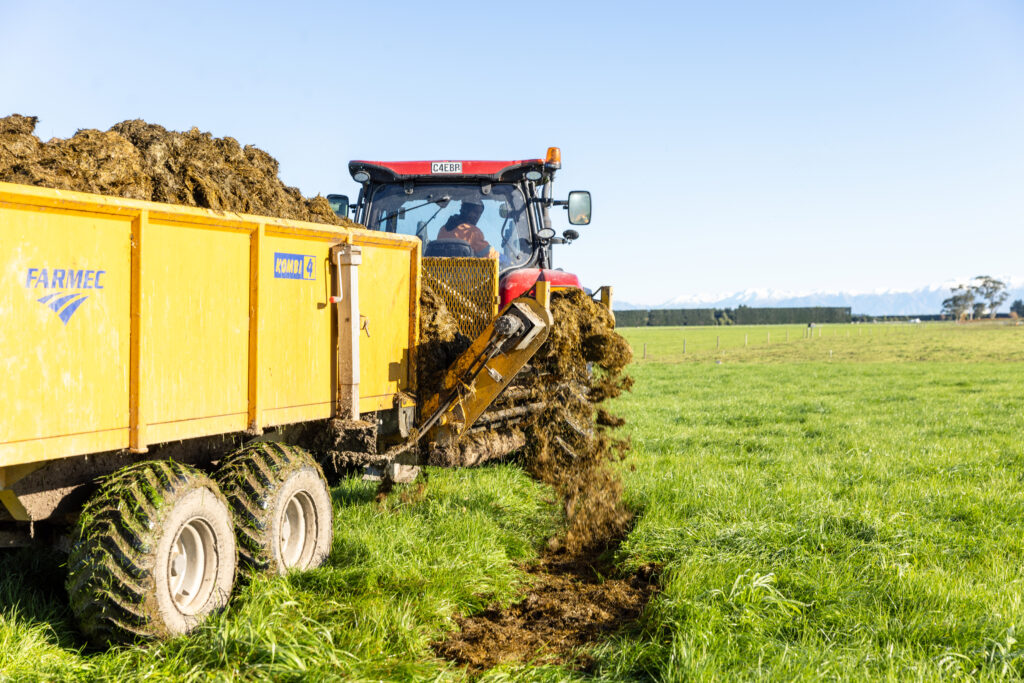
His parents bought the farm near Dunsandel 10 years ago but it needed development. When the opportunity to buy the 50ha runoff that adjoined the property came up they enlarged the 150ha farm to 170ha, on which they milk 640 cows. But putting those cows through a 25-year-old 30-a-side herringbone shed twice a day was a challenge, so two seasons ago they invested in a new 54-bail rotary shed.
“It used to take us seven hours a day to milk and in our first season in the new shed, took five hours. We have happy staff with one person milking so the pressure isn’t there to get the outside jobs done as there used to be in the old system.”
The farm is run as a System 2, mostly pasture. Silage made on the runoff is fed late in the season. But this season they’ll move to System 3, feeding a cereal blend at milking.
“We’re still going to be a significantly pasture-based system but it’s just utilising the most out of that pasture and being more efficient. So, in the autumn, we’ll get away from the feeding with the wagon twice a day and just use more of the in-shed feeding so you’re saving on labour and maintenance.”
Symes will keep track of progress daily, using a phone app that gives production figures as well as other information including fat percentages and somatic cell counts.
“We feel we’re at the peak of where we could get with just pasture so we thought we could add a bit of supplement in with the pasture to get the most out of it so we’ve got this blend that will take most of the goodness out of the grass and put it into the udder.”
He says with an all-grass diet, up 20% of the cow’s feed intake is wasted and just disappears out the back end because the animal can’t physically turn it all into milk – but introducing the feed mix of wheat, barley, canola meal and dried distiller grains (DDG) will modify their digestive system and make it more efficient.
“The DDG works in the rumen of the cow in the microbes, and the canola meal works as a bypass protein in the small intestine and the cereals are used for the condition of the cow and the energy to turn the feed into milk and not use the condition off her back.”
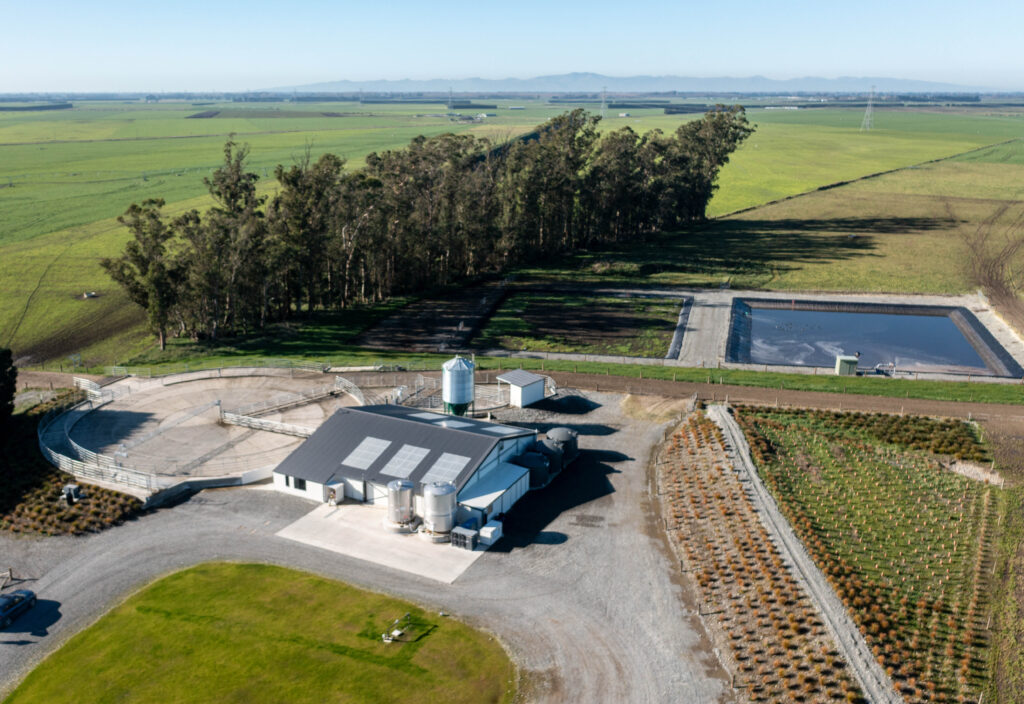
It’s projected that production will increase from 450kgMS/cow to 550kgMS/cow, which translates to a lift from 1800kg/ha to 2100kgMS/ha.
“After doing all the figures, I can confidently say we are going to be financially better off than if we were in System 2 and the good thing is if we don’t hit that production, we can easily just pull that feed out and go back to System 2. We’re not relying on System 3 for survival, we just want to get the most out of the system.
“You set a target at the start of the season and you have a line for the season so each pickup you’ll see where that curve is, an actual and budgeted one, so then you can really watch it and see, ‘We’re on the wrong track here, we’re not going to hit production, we’re going to lose money’, or , ‘We’re away above so we’re on the right path’.
“The big thing for us with going into this System 3 was not just being a blanket feeding operation where we just chuck the feed at the cows and hope for the best. We want to make sure that with the feed we’re feeding we’re getting payback and that it’s doing what it’s meant to.”
When he took over as manager, one of his first tweaks to the system was to reduce the number of downer cows during calving – there were 30 in his first season on the farm, something that, after researching, he put down to their diet and a lack of calcium.
“I changed their diet and added a slow-release calcium bolus into their system, so as soon as they’re calved, I put one of them down their throat and that led to a better transition period, and we only had one down cow this spring just gone and that was a big, overweight girl at the end of calving.”
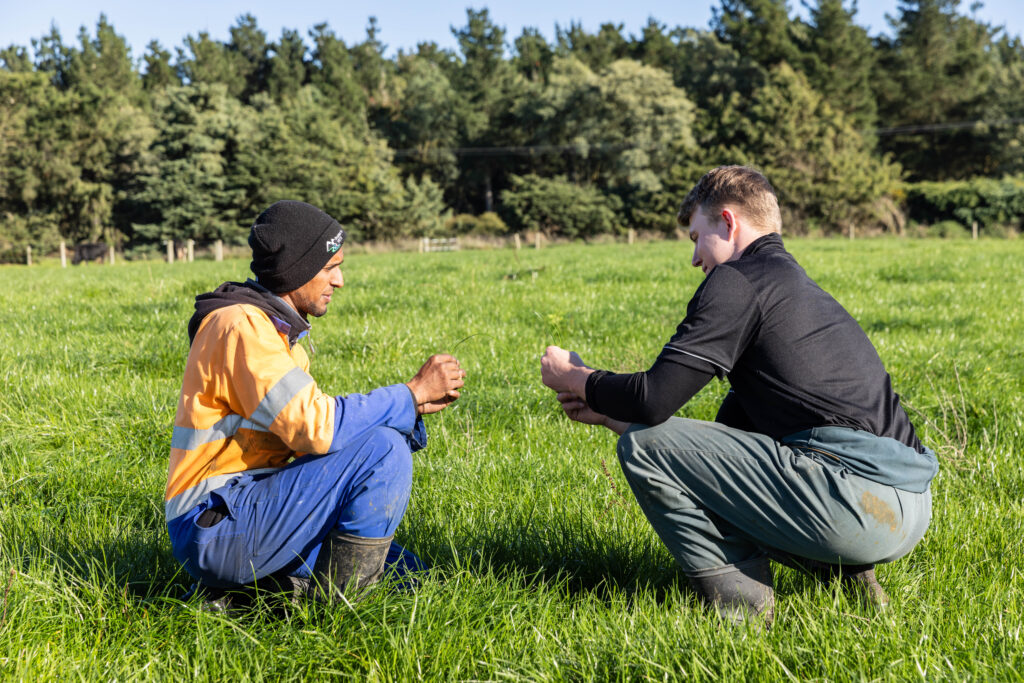
Calving begins on July 25, and they keep about 130 replacements along with 50 beef bulls that he finishes on the runoff and sells as two-year-olds. He also picks 20 bulls that he rears on his own 10ha lease block and then leases those animals back to the farm to complete mating over five weeks after AI has finished.
He’s also looking to improve on the farm’s 70% six-week in-calf rate, aiming to get it up to 75% or 80% by transitioning well, getting rumination right and minimising body condition loss.
“We’ll be really trying to give them a sugar-coating from calving through to being a milker so that could mean that a cow, instead of being on once-a-day for four days with the colostrums, gets eight days or so. We’ll just try those different experiments and then add a wee bit of supplement as well just to get them over the whole procedure they’ve gone through,” says Symes.
He says their herd is in the top 10% of LIC’s clients with a BW of 230 and PW of 280 and he’s keen to make the most of those good genetics.
“It’s about seeing what we can get out of those girls,” he says.
Mating begins on October 23 and runs for 11 weeks, of which they do six weeks of AB.
The Kiwicross herd is descended from the cows his parents started out with and their breeding programme targets their best performers, with the top 100 mated to sexed semen to maximise genetic gain.
The bottom 20% get beef straws (short gestation Hereford) and four or five bulls are selected for the middle-range cows, working to improve different traits.
“You might have a cow that’s quite short and dumpy, so you want to put a bigger bull over her, or she has a terrible udder, so you want a bull with a good udder trait.
“Selecting bulls is quite exciting, it’s not just a blanket breeding, chucking one bull over the whole herd, you can mix and match.”
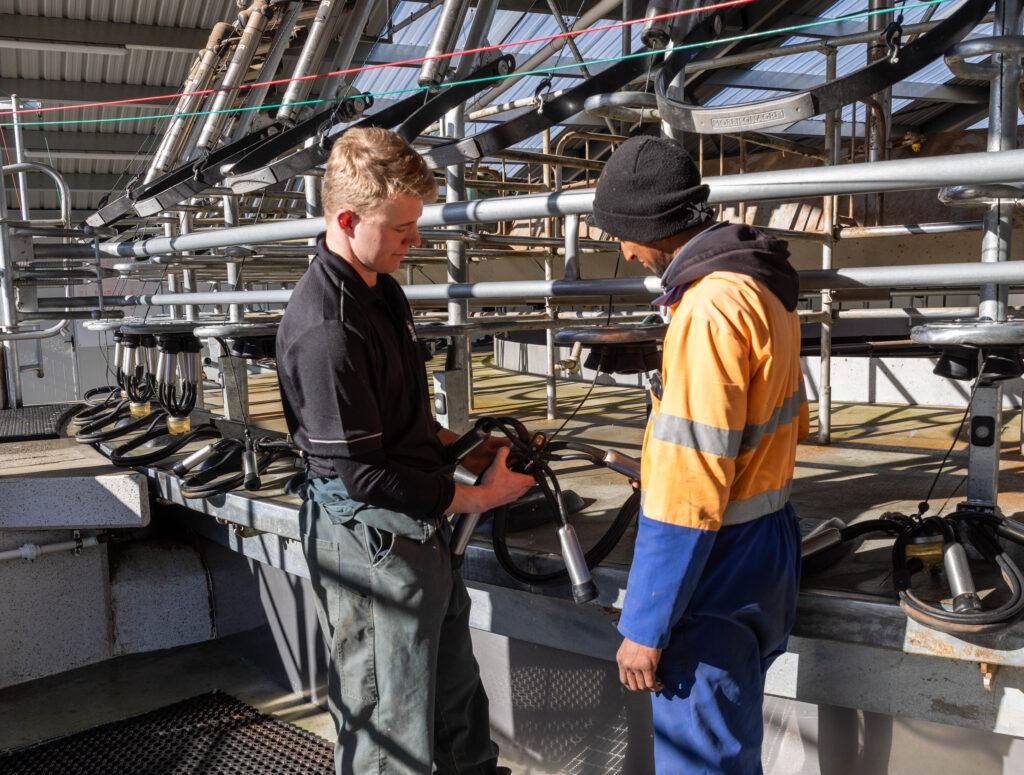
At the same time as building a new shed, the Symes did a mini conversion of the farm, changing the paddock layout and cutting the number of paddocks from 43 to 23. The newly formed paddocks were rectangular rather than the pie-shaped layout centred on centre pivots, which they added in 2014.
“We pretty much hit the reset button really and designed it how we wanted to run the farm and made it a lot simpler and definitely a lot more efficient.”
While the new layout requires more break fences than previously, it has shortened the walking time to and from the shed for milking and having seperate exit and entry gateways also minimises soil damage.
“They’re on that break for a day and they spend less time on their feet walking everywhere so that will help with lameness as well. We’ve got the daily walk from paddock to shed to break down to about 1km a day, which is quite low for Canterbury. With long walks you’re using so much feed just in their maintenance and that energy to walk.”
He has been proactive about addressing lameness and makes sure there are no long toenails in the herd and trims hooves promptly if necessary. At every milking staff keep an eye out for hoof issues and if they spot any, the cow is drafted out using Protrack and its hoof trimmed before she goes back to the paddock.
“I have the mindset of being proactive not reactive to everything on farm, having systems in place to prevent a problem before it is too late. The staff are on board with that as well; it makes them engaged, they’re not just sort of doing the job day to day in la la land and they’re keen to have their say, which is awesome.”
Rectangular paddocks also make it easier to accurately calculate the optimum size of the breaks and he uses a phone app.
“It has GPS of the whole farm and then you can make sure 100% you’re giving them that area that you set out. You drive into the paddock, drive from one side to the other and then longways and then you can see the line where to put your fence. Really simple and efficient.”
A new effluent system was also installed with the solids settled out in one pond and the virtually clear liquid that flows into a second pond is pumped out through a centre pivot, allowing the effluent spreading area to be increased from 20ha to 70ha, which in turn makes it easier to meet N loss regulations.
“Every month a quarter of the effluent area will get spread so that means that 20ha won’t need as much N because it’s got it through effluent.”
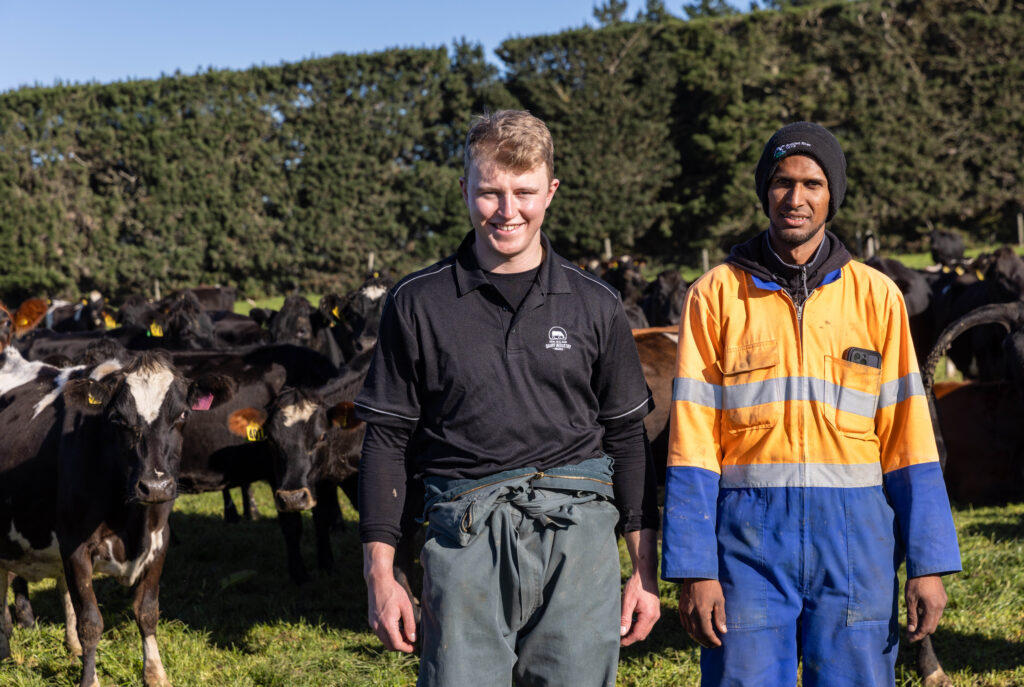
Before making the changes the Symeses carefully considered whether it was best to invest in upgrading the farm or sell it and buy one with the right infrastructure already in place.
“With the location and the soils and the water that we have on this farm, some of the best in Canterbury, we decided it would be silly to sell what you need to grow grass and produce milk going forward so we thought we’d just do a bit of capital expenditure on the place and bring it up to 100% rather than try to find another farm.”
With that decision made and the new infrastructure in place, it’s now up to him to make the investment pay and one of the ways he plans to do that is by using the in-shed feeding system that came with the new rotary.
“The builder at the time said it’s a lot cheaper to have it in there rather than try to put it in five years later so we thought, ‘We’ll do it’,” Symes says.
He’s aiming to increase annual production from 280,000kgMS to closer to 350,000kgMS next season.
“It is quite exciting. It’s not going to come easy but it’s going to be a good challenge and it’s just making sure you’re not taking any shortcuts through the season, to make sure you do all your little things right and that result will come.”
He plans to do another season as manager and then look for new opportunities, possibly contract milking or lower order sharemilking.
“I don’t want to be that typical, ‘He’s gone home and he’s just living off the back of what his parents have done’. I’m keen to build my own fort a wee bit and get out and about.”
He’s also keen to help rehabilitate dairy farming’s standing in the wider community. He believes it is at least in part based on misconceptions.
“We need to get away from that mindset and showcase what actually happens on farm and educate people. We had protesters at our awards dinner, but I bet 100 of them wouldn’t have known what happens on farm.
“And one thing going up for the awards made me laugh. Every hour there was a plane leaving from Auckland or Christchurch going back and forth, creating far more environmental damage than what we’re doing.”










